Mass Fluoride Poisoning… Is it possible?
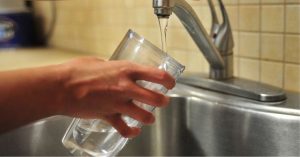
Mass Fluoride Poisoning…
Is It Possible?
.
We are looking to our policymakers:
.
Will they aim to safeguard public health and national security?
.

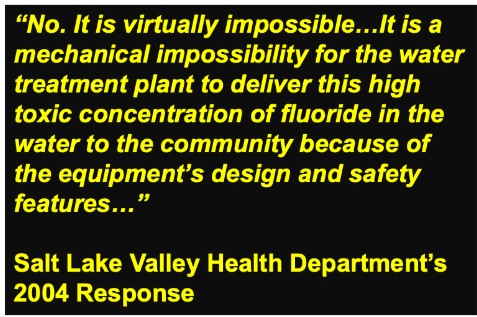
Notice how Salt Lake Valley Health Department explains away problems with their fluoridation equipment,
but read on to find out the real truth…
A big “thank you” to Dr. Phyllis Mullenix for providing Secure Arkansas with the slide deck in this article.
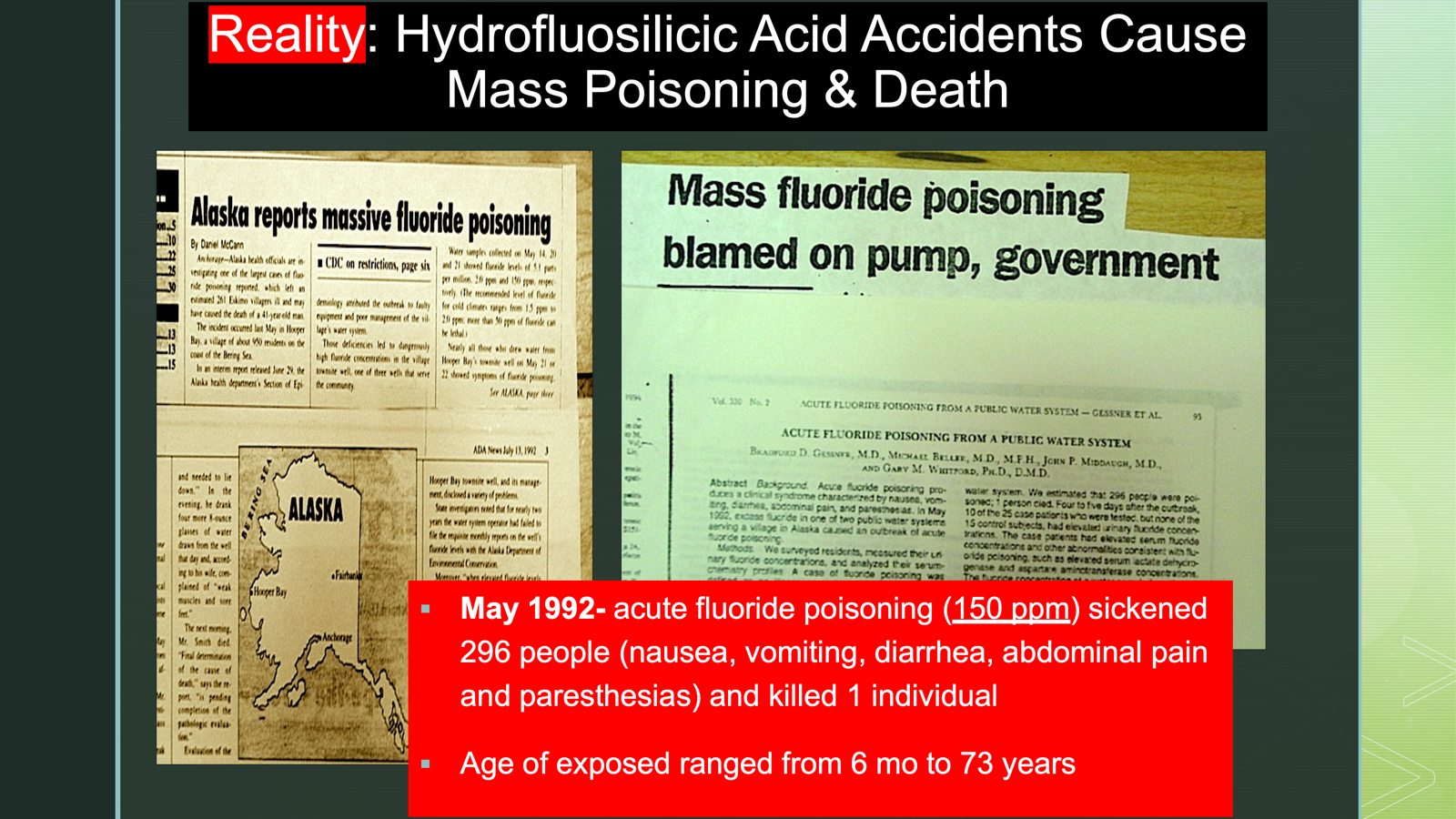
Alaska experienced a significant fluoride poisoning incident in 1992 in the village of Hooper Bay.
This event is considered one of the most severe fluoridation accidents in U.S. history.
See the Anchorage Daily News.
For more information see: Fluoride Suppliers Want to Keep Toxic Ingredients Hidden from Public.
Get the facts.
-
is a toxic and corrosive liquid
-
is not pharmaceutical-grade
-
contains contaminants like arsenic, lead, or other heavy metals
-
is an industrial by-product (from the phosphate fertilizer industry)
And what about Utah?? Has there been poisoning there?
Yes:
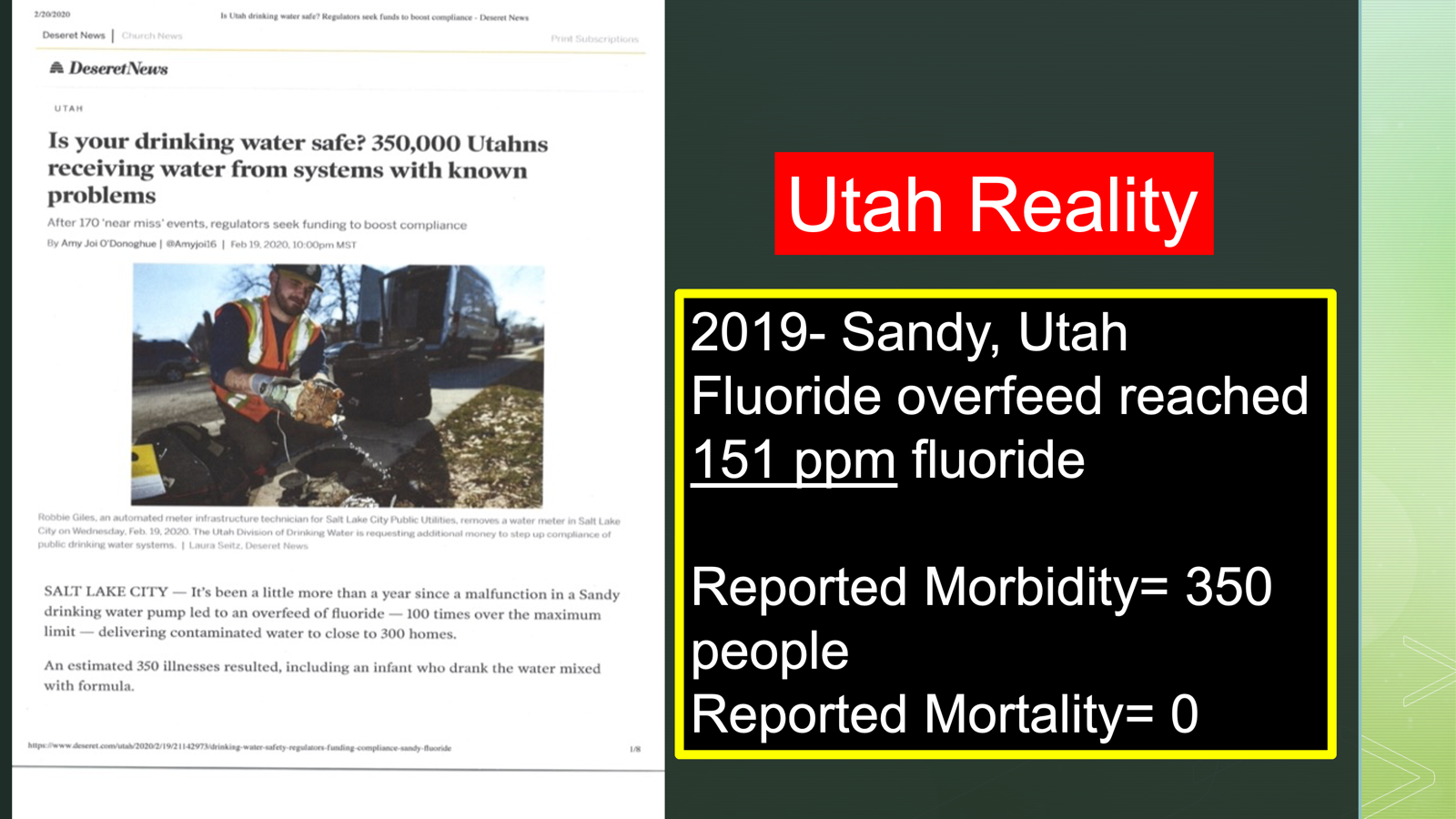


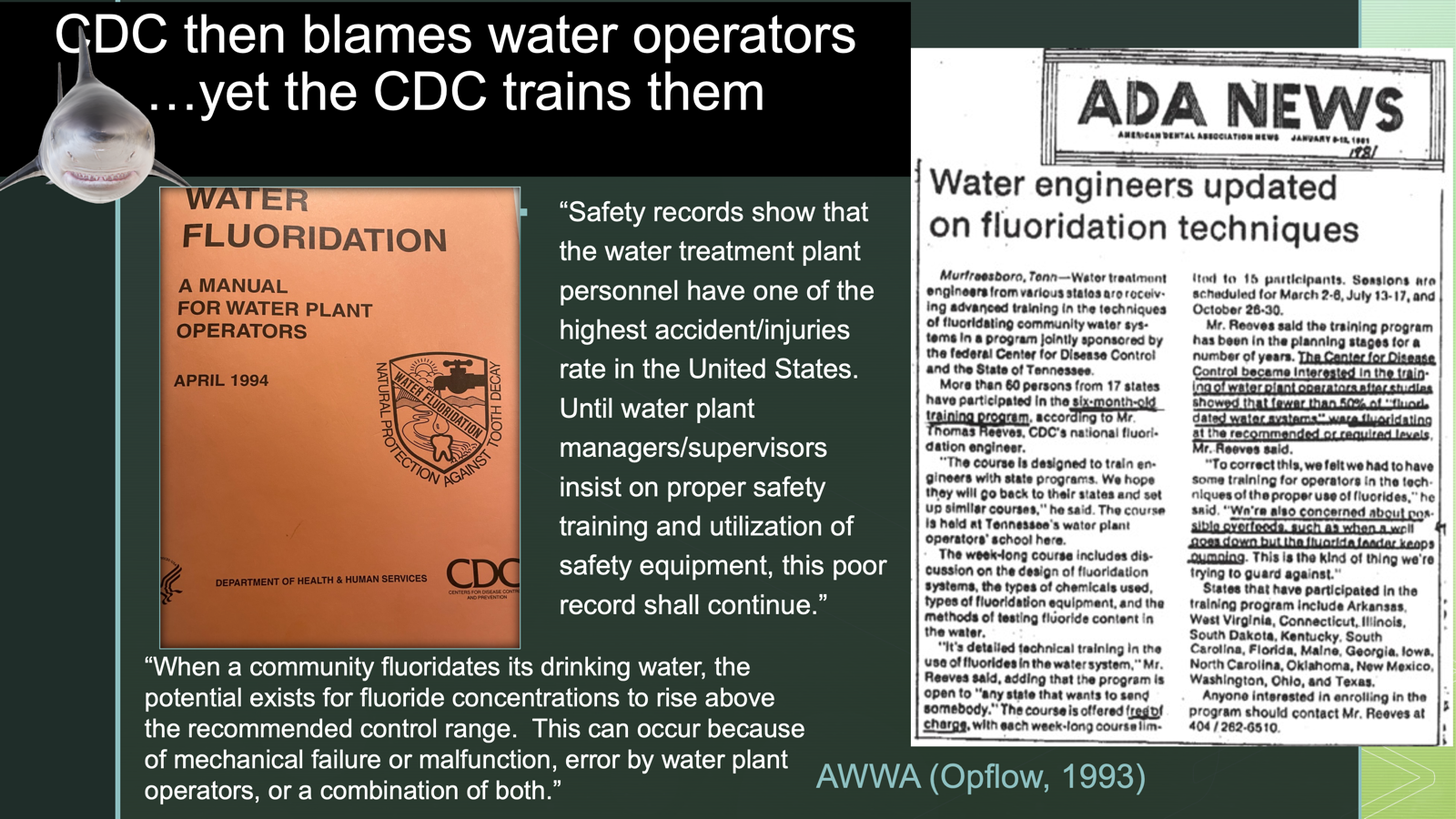
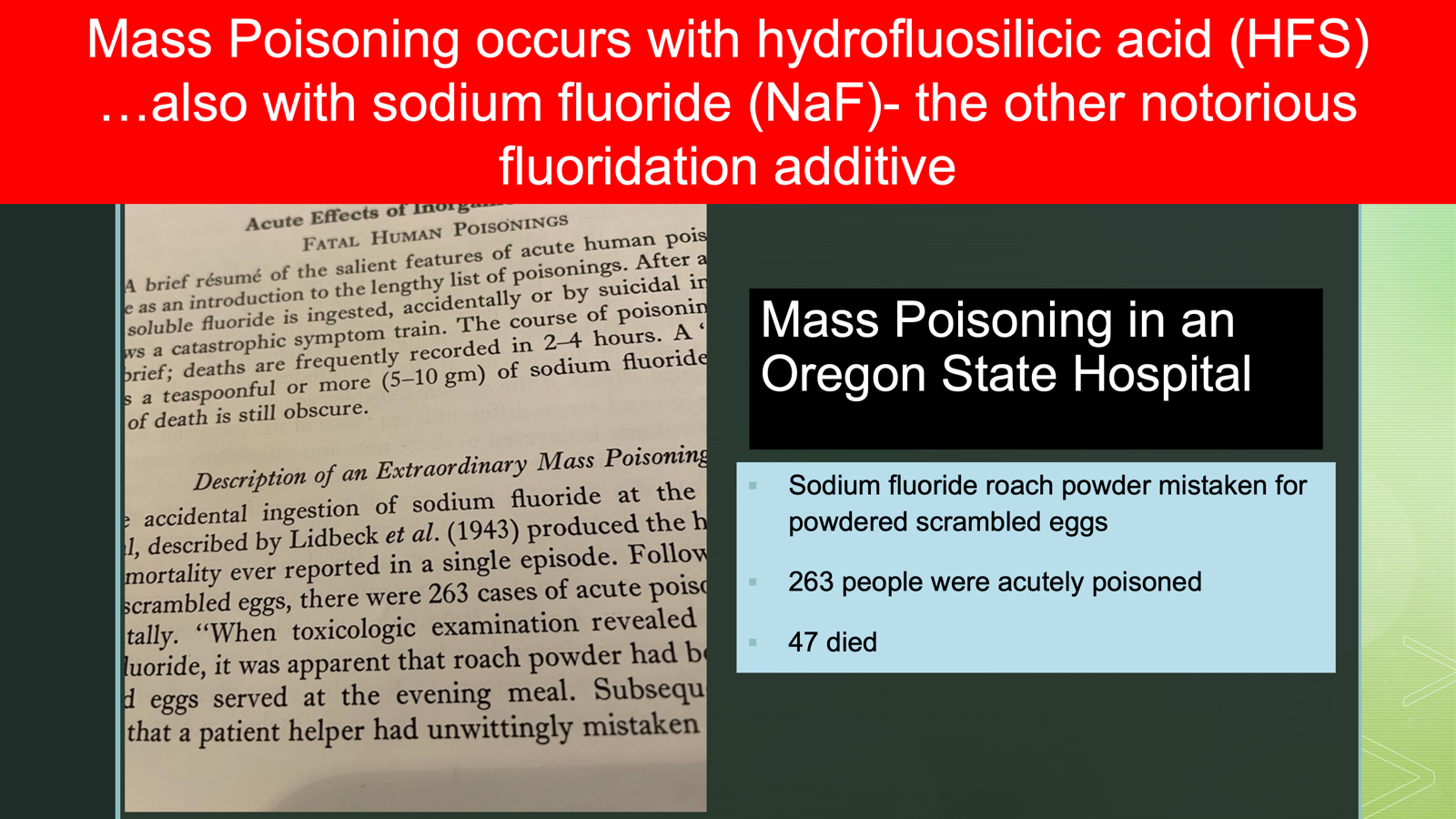
Read more in this article from 2017 — 1942: How one incident caused 47 patients to die at the Oregon State Hospital
Several important snippets:
A ghastly scene unfolded during dinner 75 years ago at Oregon State Hospital. Patients began dropping like flies after eating a batch of poisoned scrambled eggs, vomiting blood and writhing on the floor in agony.
Some died within minutes, others succumbed hours later, 47 people in all. Officially, there were 263 cases. Newspapers, however, reported more [than] 400 others were sickened.
Gov. Charles A. Sprague called it “mass murder.”
Sabotage was initially suspected, what today we would call a terrorist attack. This happened in 1942, with the country engaged in World War II.
Autopsies were done on six patients. Samples from the cooked eggs and stomach contents were sent to the lab in Portland.
Bits of eggs, both from the plates of patients and from the hospital’s unused supply, were fed to rats. Those fed the cooked eggs died within a few minutes. Surplus eggs were tested up and down the coast.
Within 22 hours, according to the report submitted by Lidbeck and his colleagues, the poison was identified as sodium fluoride, and it was found only in cooked eggs at Oregon State Hospital.
Sodium fluoride is commonly used in insecticides and in rat and cockroach poisons. It is a quick-acting white substance that might easily be mistaken for flour, baking powder, or powdered milk. Ingesting a minuscule amount can be fatal.
It turns out, the addition of toxic sodium fluoride into the scrambled eggs was accidental, and this article claims that: “A grave mistake like the one with the scrambled eggs couldn’t happen today for many reasons, the most important of which is constant supervision.”
The article goes on to say:
Patients who work in food services today must have a food handler’s card and go through additional safety and sanitation training.
“We follow higher standards than what Marion County requires of us,” Hunter [director of food and nutrition services for the Salem campus] says.
Both he and Anhalt agree it would be next to impossible for someone today to mistakenly grab rat poison or any other dangerous substance and add it to a meal.
“None of those chemicals are even allowed anywhere near kitchen and food services,” Hunter says.
Did you read that? “None of those chemicals are even allowed anywhere near kitchen and food services”…
and yet, TOXIC sodium fluoride is STILL being added INTO our public water supplies??? …for us to drink out of the tap (that’s often IN the kitchen); to use to wash our fruits and vegetables; to make soup; to cook meats, potatoes, and vegetables; to make tea, coffee, and other drinks; and to use for showers and baths (which can soak into the skin)…
And THIS is acceptable??? We don’t recall any Scriptures that encourage us to, “Poison thy neighbor…”
We are, however, encouraged to love one another and to do unto others as we would have done to us.

Sodium Fluoride (NaF) is a white crystalline solid.
The industrial source is synthetic, often from aluminum refining.
See Industrial Sources:
-
Aluminum smelting (from fluorite or fluorspar reactions)
-
Phosphate fertilizer production (fluoride gases are captured and converted)
-
Other fluoride-using chemical industries
For more information see: Biochemical Effects of Fluoride and Metal Ingestion submitted by Sandra Sindel Young, MD (retired)
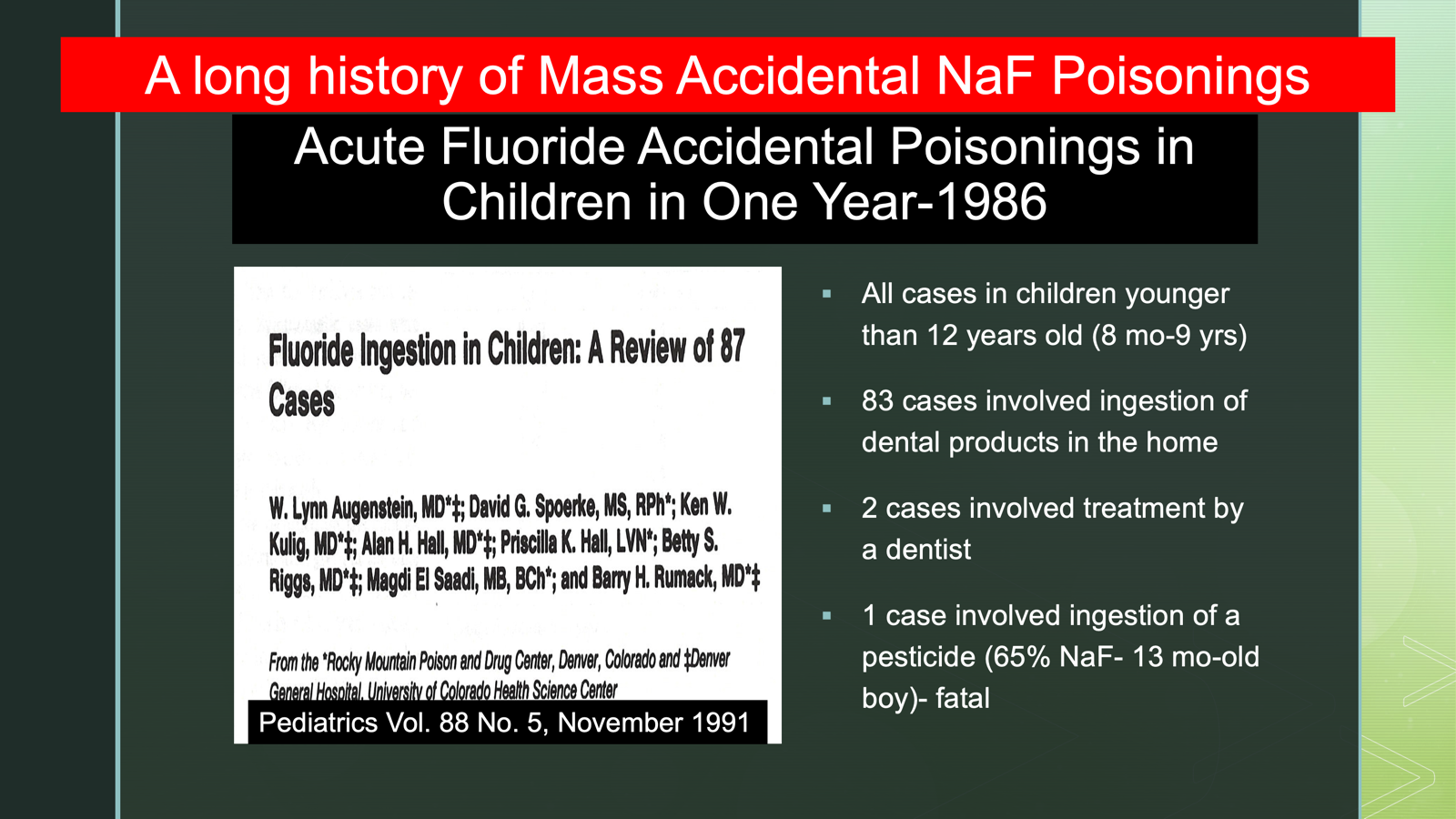
Risks of Excess Fluoride Ingestion:
1. Dental Fluorosis: Common Source: Chronic low-level overexposure in children
-
Caused by chronic excessive fluoride intake while teeth are developing (under age 8).
-
Symptoms: White streaks or spots on teeth (mild), to brown stains and pitting (severe).
-
Most common fluoride-related condition in children.
-
In a later NHANES study (2011–2012) found that roughly 65% of children aged 6–19 showed signs of fluorosis is supported by data from the National Health and Nutrition Examination Survey (NHANES). PubMed
2. Acute Fluoride Toxicity
-
Can occur if a child swallows a large amount of fluoride at once — e.g., a whole tube of toothpaste.
-
Symptoms (within minutes to hours):
-
-
Nausea
-
Vomiting
-
Diarrhea
-
Abdominal pain
-
Headache
-
High doses can affect the nervous system or even be life-threatening.

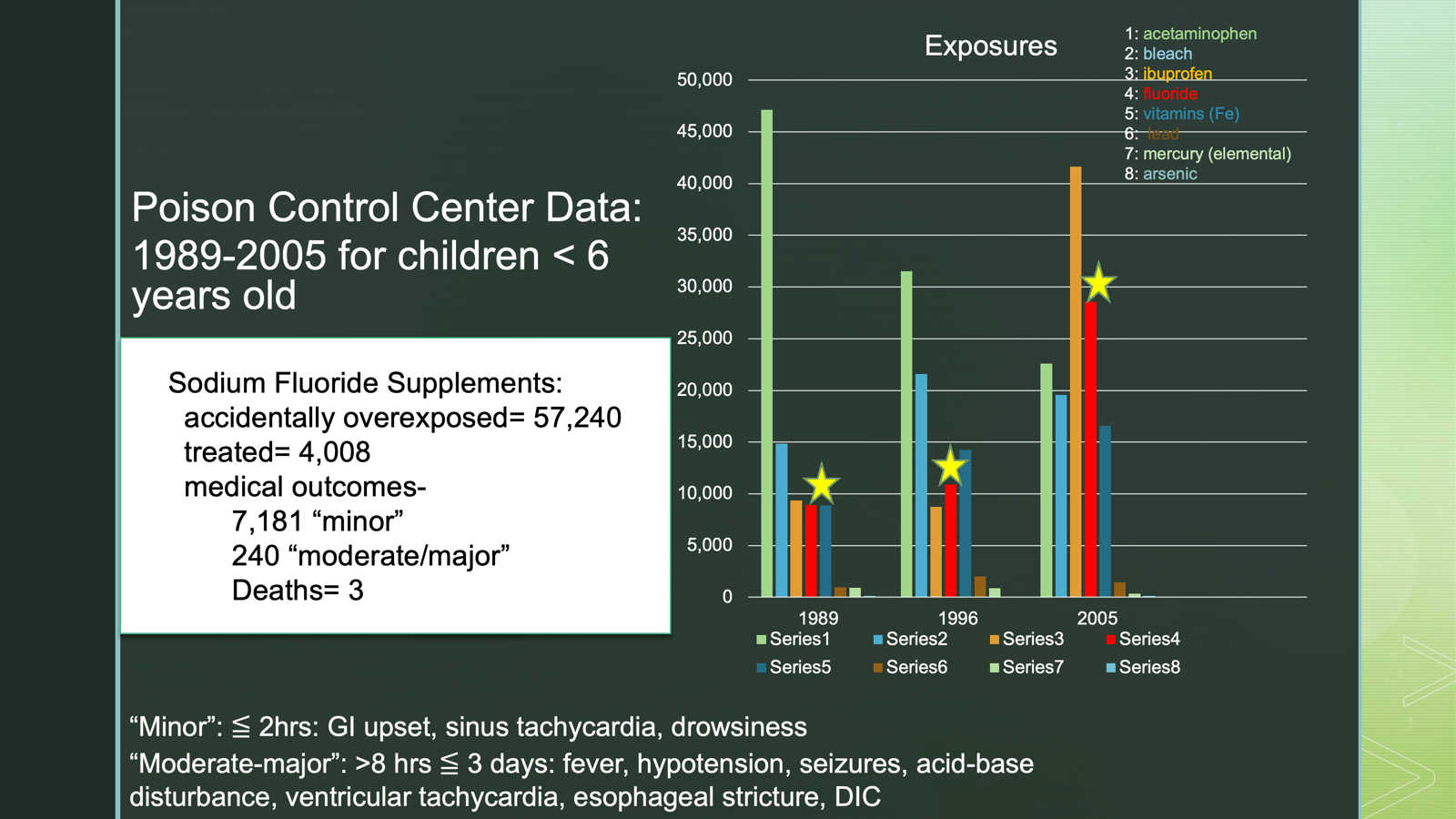
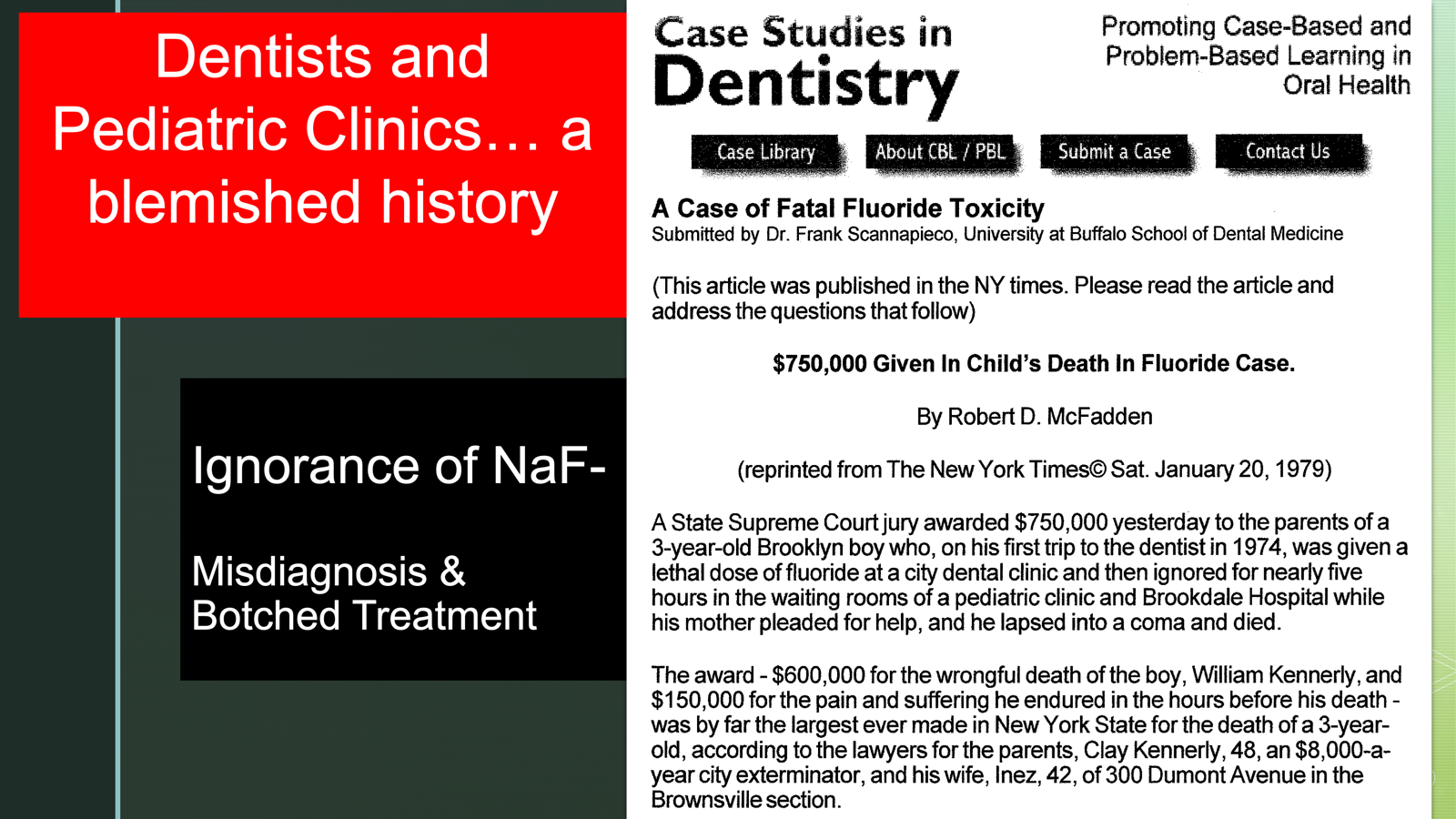
So, should fluoride be delivered
-
systemically (via water) or
-
topically (via dental treatments only)
or banned entirely in water fluoridation?
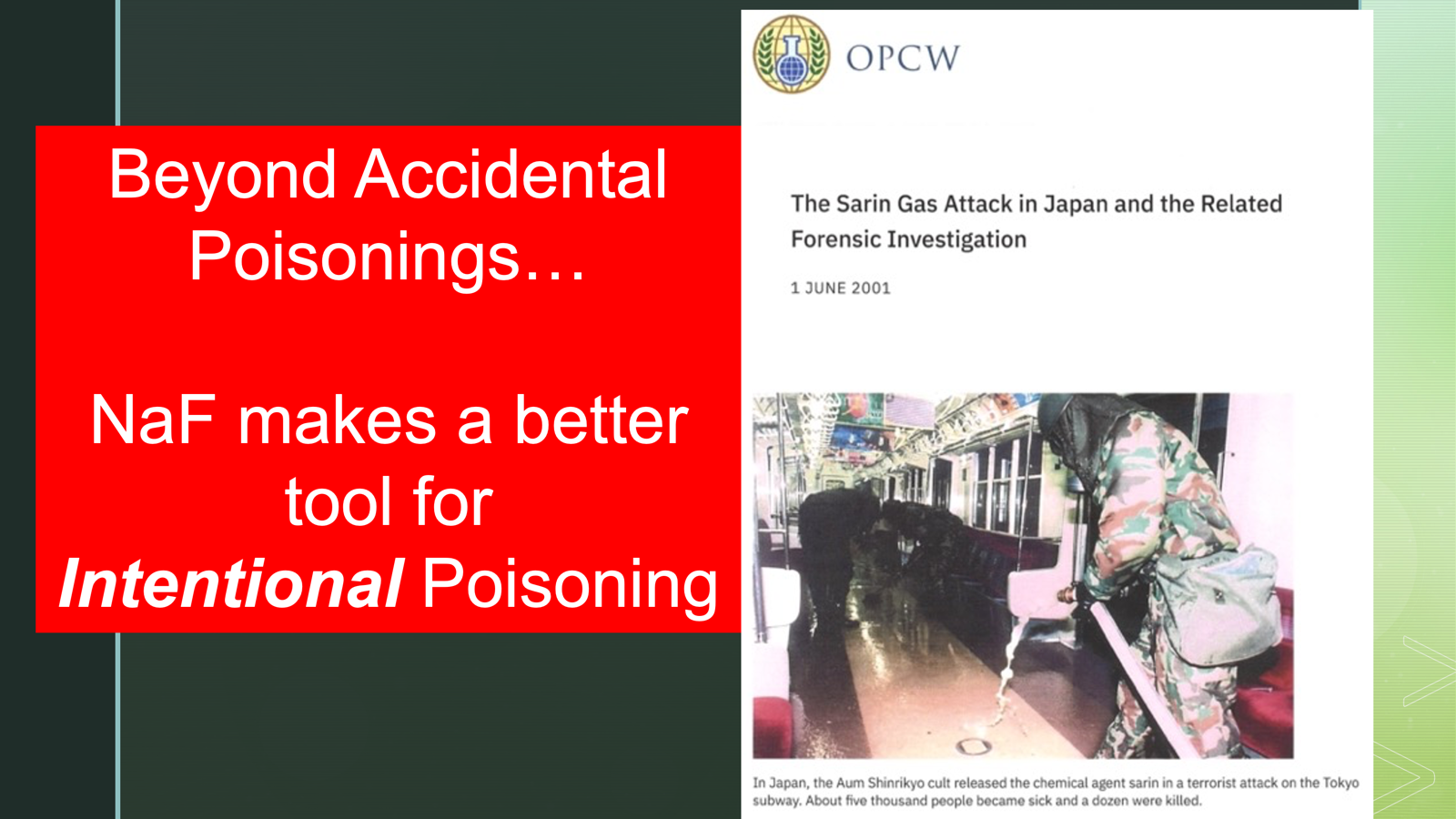
NaF is Sodium Fluoride. Sarin gas is a highly toxic organophosphorus compound used as a nerve agent. It was originally developed in 1938 in Nazi Germany as a pesticide, but it’s now classified as a weapon of mass destruction under international law.
Sarin is a clear, colorless, and odorless liquid in its purest form. It evaporates quickly and can turn into a gas easily, making it extremely dangerous for inhalation or skin absorption.
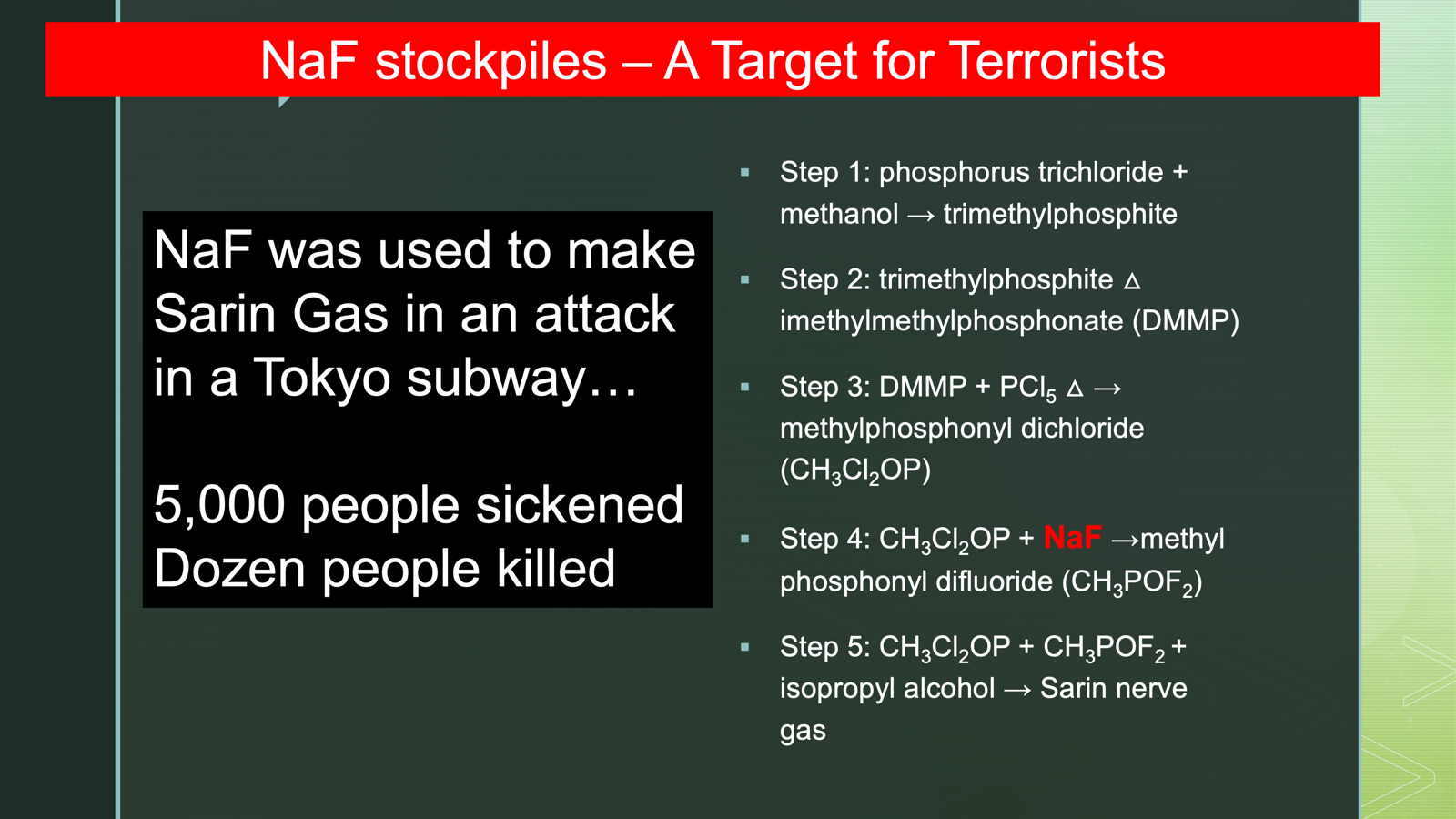
Impact
-
Casualties:
-
-
13 people killed
-
Over 1,000 severely injured
-
More than 5,000 people sought medical treatment
-
-
Many survivors experienced long-term neurological and psychological effects.
-
First responders were also affected, as they lacked proper protective gear and training for chemical attacks.
Note: Many cities use NaF for water fluoridation, meaning facilities that store it exist across the country, often with minimal security.
A deliberate contamination of a water supply, for example, could pose a public health threat.
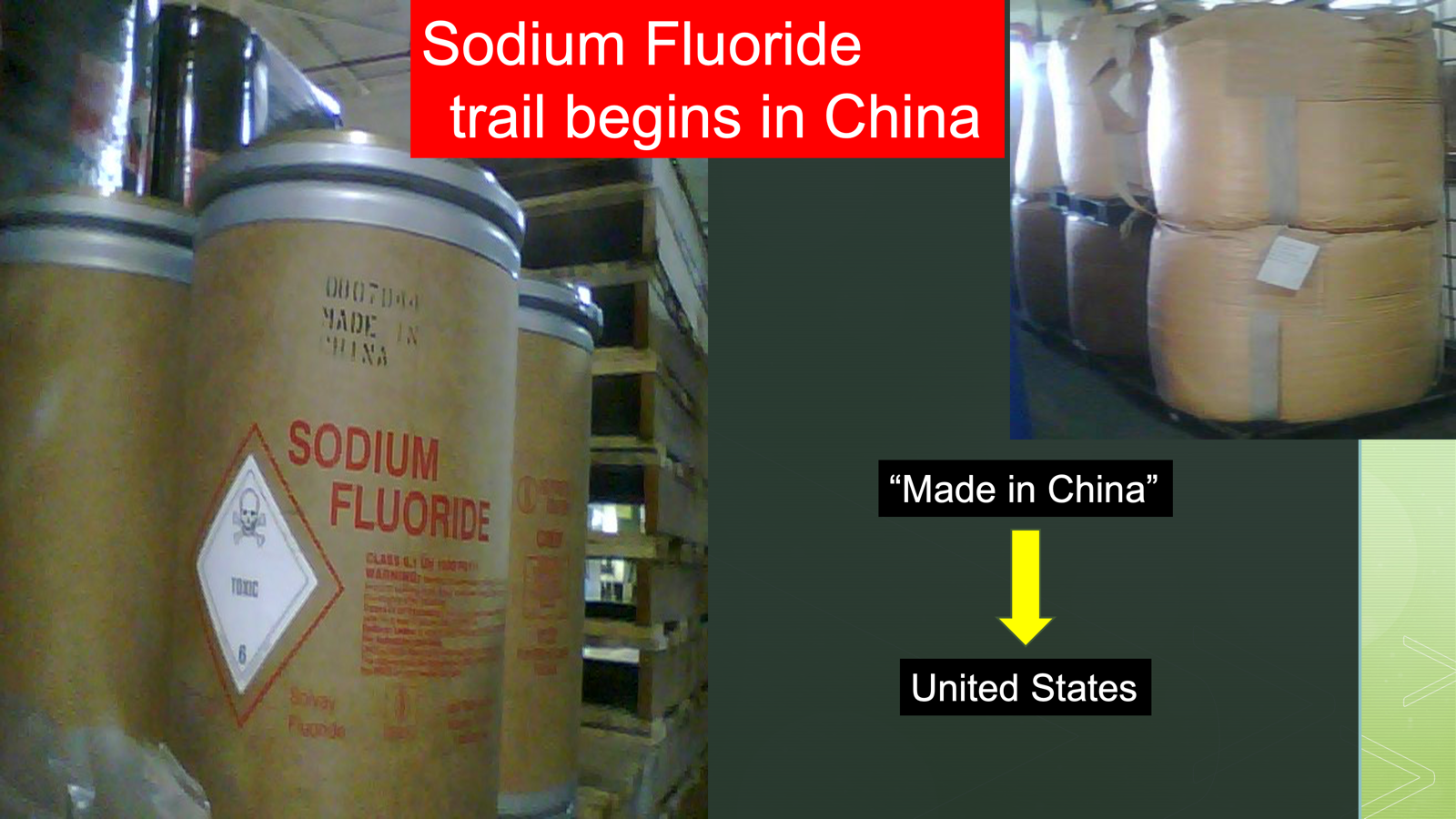
China has large-scale chemical manufacturing: China is one of the world’s largest producers of industrial chemicals, including sodium fluoride and related fluorosilicates (like fluorosilicic acid and sodium fluorosilicate).
National security & supply chain: Some critics argue reliance on Chinese fluoride compounds introduces a strategic vulnerability in public infrastructure.
See this March 2025 article of industrial concern with China:
US FCC launches Council for National Security to combat foreign adversaries, focus on China
With rising concern for cyber attacks from China,
could hackers be able to adjust amounts of fluoride feed dispensers?
We are concerned that China’s access to data and their control of software and connected technology in the U. S. provides Beijing with tools to attempt espionage, to attack our critical infrastructure and invade our government operations.
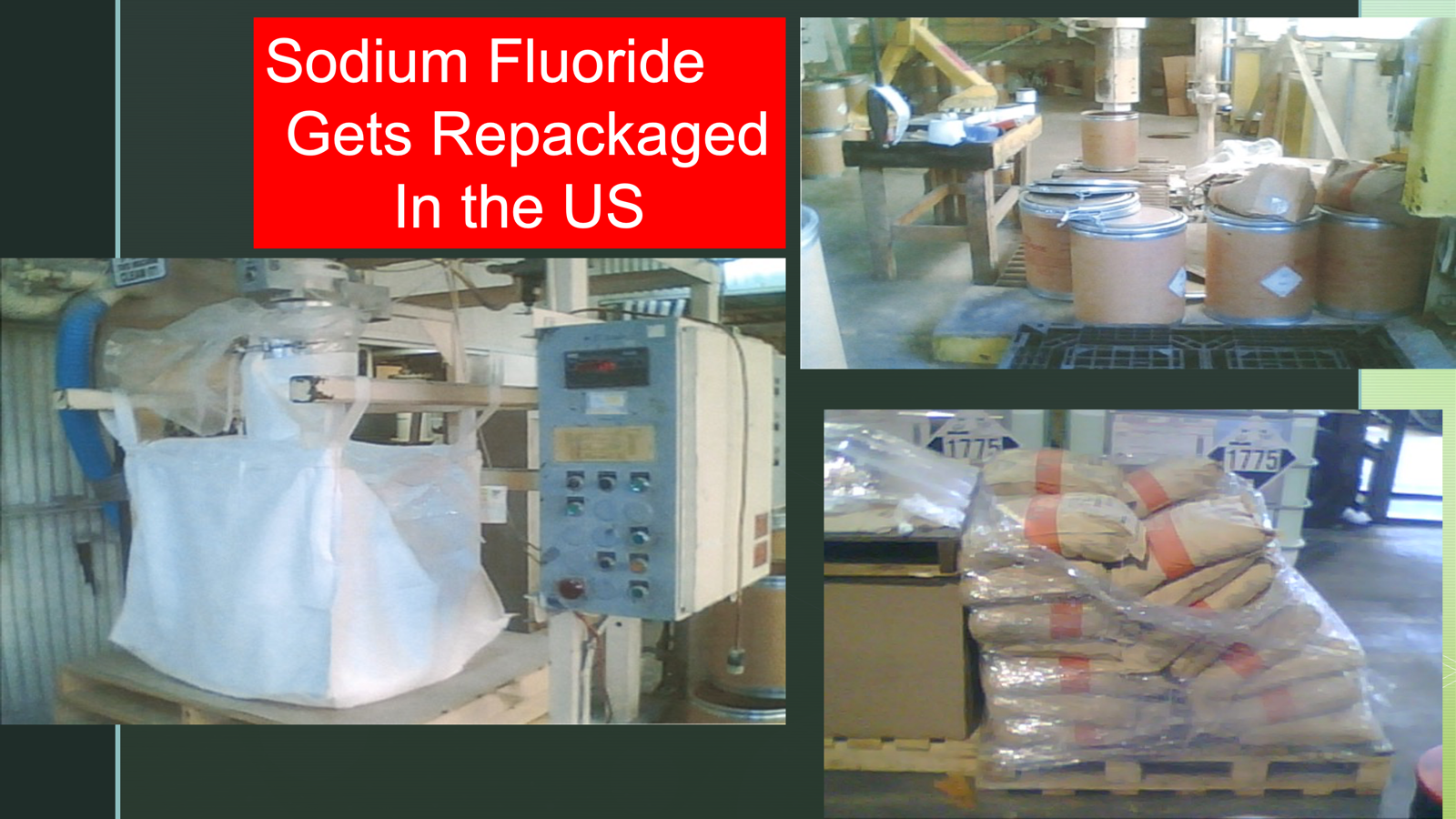
Many critics have raised concerns over quality control, contaminants, or lack of transparency in foreign chemical sourcing — especially from countries with less regulatory oversight. These concerns have led some communities to oppose or reconsider fluoridation programs. And some have banned fluoridation outright!
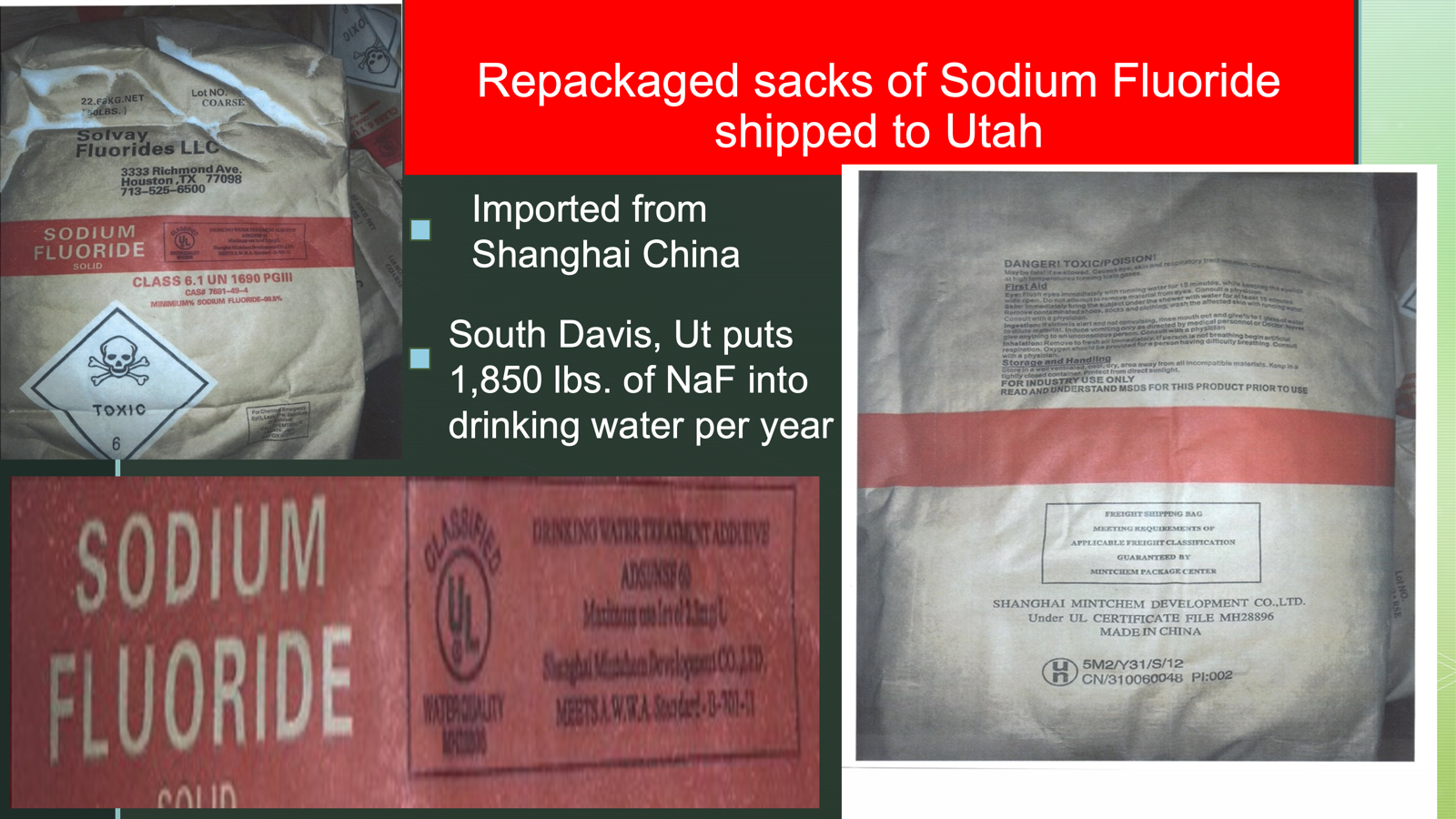
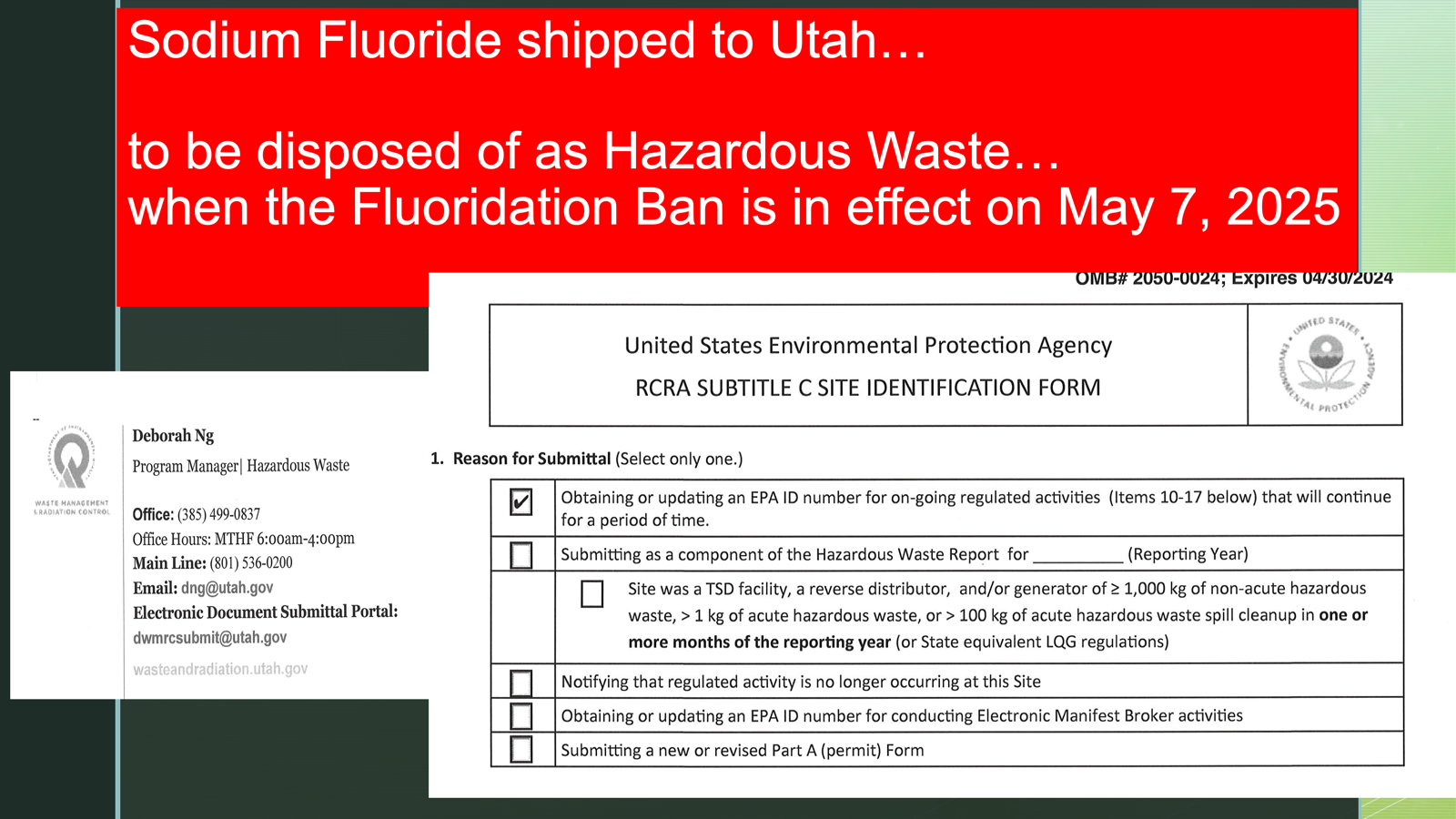
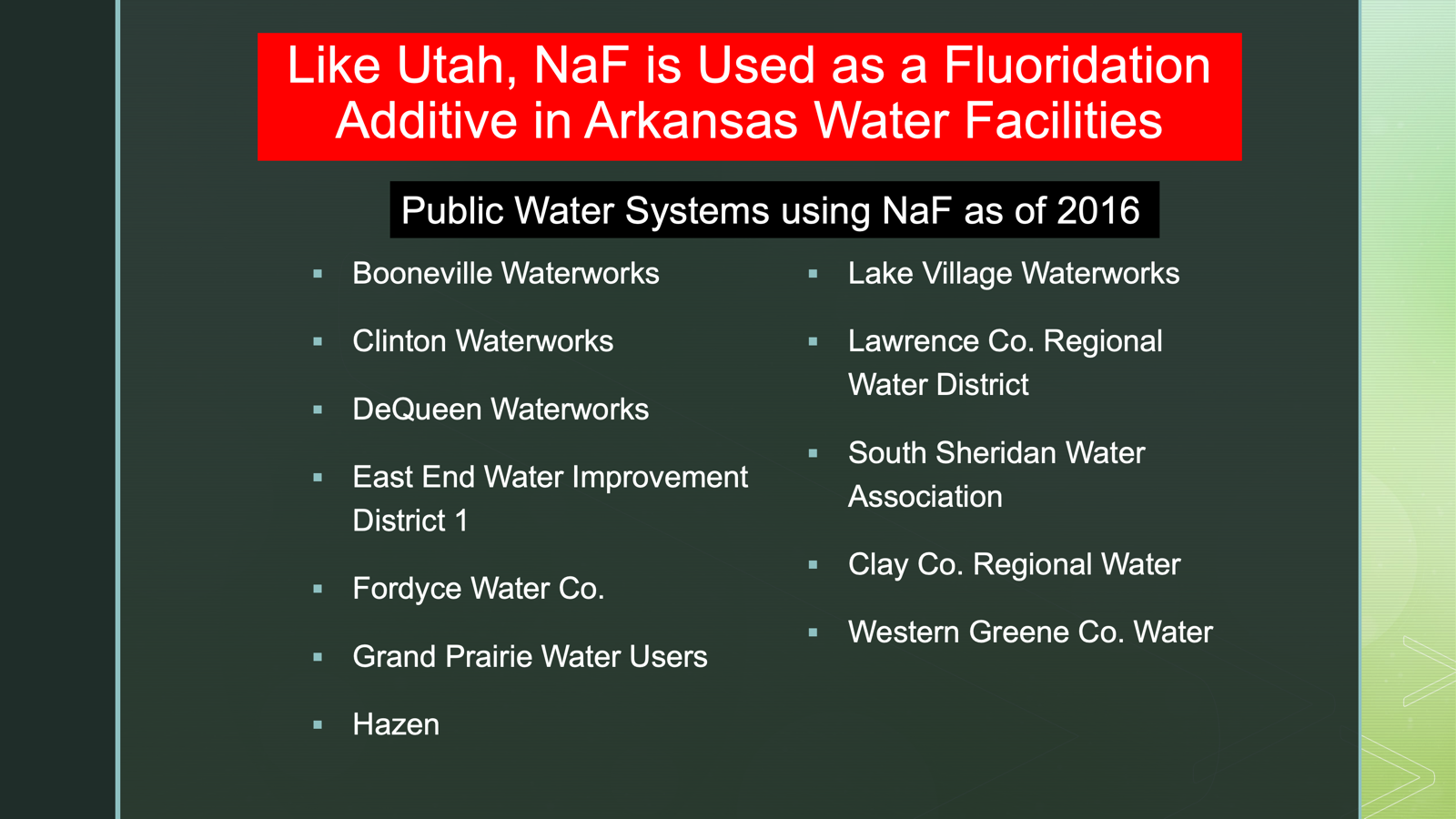
IF terrorists were to raise up in our country,
where could they go to get their hands on toxic chemicals?
Any one of these water facilities listed above!
Fluoride Incidents in Arkansas:
-
Lowell, AR (1996)
The Beaver Water District previously used fluorosilicic acid for fluoridation. Due to severe damage caused by fumes from the liquid, the facility switched to using sodium fluorosilicate powder when resuming fluoridation in 1996. -
Malvern, AR (1997)
A water plant operator at the Kimzey Regional Water Plant was sprayed with fluorosilicic acid, leading to permanent health issues, including the loss of all his teeth and long-term disability. Secure Arkansas can supply you with his name if you ask us. -
Conway, AR (2008)
A 42-inch water pipe corroded and failed due to the fluoride injection port being mounted too close to a chlorine injection port, necessitating the shutdown of a portion of the plant. -
England, AR (2011)
A worker mistakenly mixed about 10 to 20 gallons of fluoride with approximately 150 gallons of bleach, creating a dangerous gas and leading to the evacuation of several nearby businesses. Two individuals were treated for breathing problems. -
West Memphis, AR (2001)
A leak in a storage tank released approximately 2,300 gallons of fluoridation chemical onto the ground, posing environmental and safety concerns.
Once again, we implore the legislators of Arkansas to pay attention to these details about fluoride and to stand up for the health of ALL Arkansans.
Readers, pray that SB2 gets out of the House Public Health Committee. Please don’t hesitate to give the Chair of this committee a call! He will be the one controlling this last committee meeting for this session!
And reach out to the members of the House Public Health Committee ASAP: tell them you support SB2 to remove the water fluoridation mandate in Arkansas.
Here is the Agenda for the House Public Health Committee for Tuesday, April 15, 2025
8:00 am, Room 130, State Capitol.
2025 House Committee for Public Health, Welfare, and Labor:
As always, our articles may be viewed on our website at SecureArkansas.com. Once there, you may:
- view current articles on the main page;
- view older articles by clicking “Posts & Articles” at the top left of the main page and scrolling down.
- view additional past articles by clicking the “Next Page” button at the bottom right.
To find information about a topic, just type it into the Search box on our website, and click Enter!
Click here if you’d like to sign up to receive Secure Arkansas email alerts.

Securing the blessings of liberty,
Secure Arkansas
securetherepublic.com/arkansas
info@securetherepublic.com
image credit for cover image
